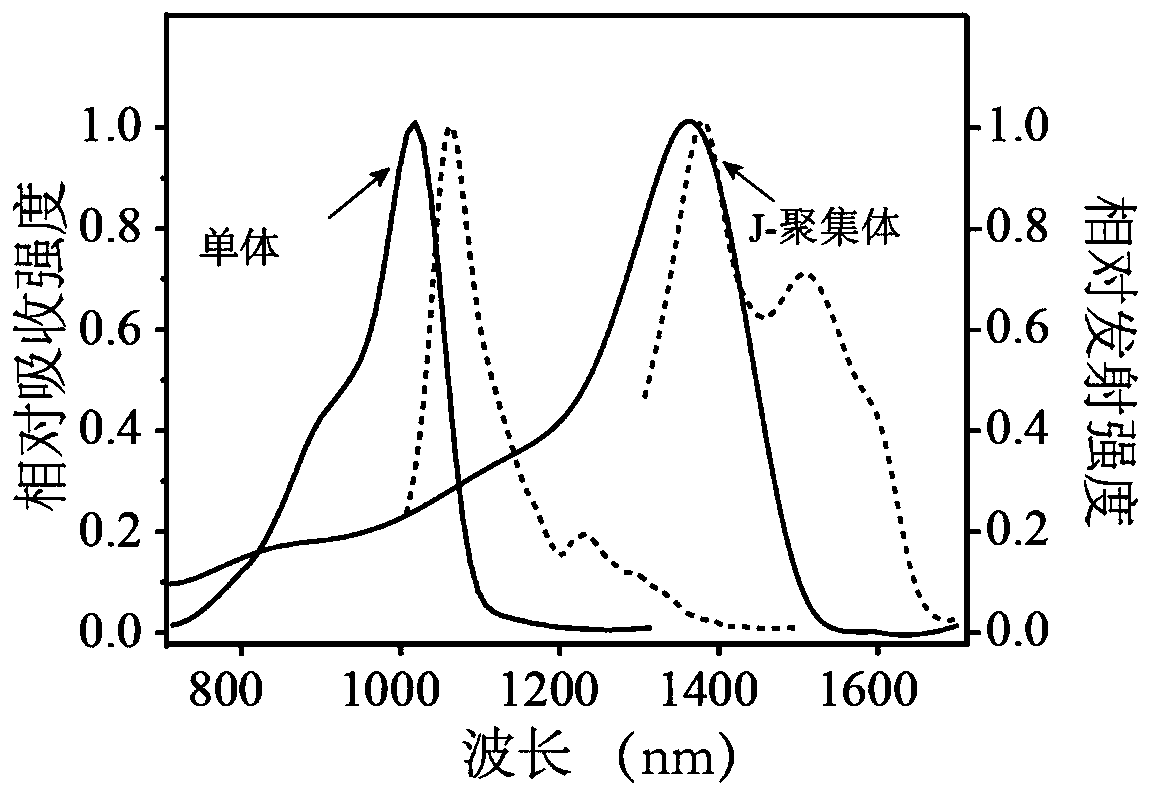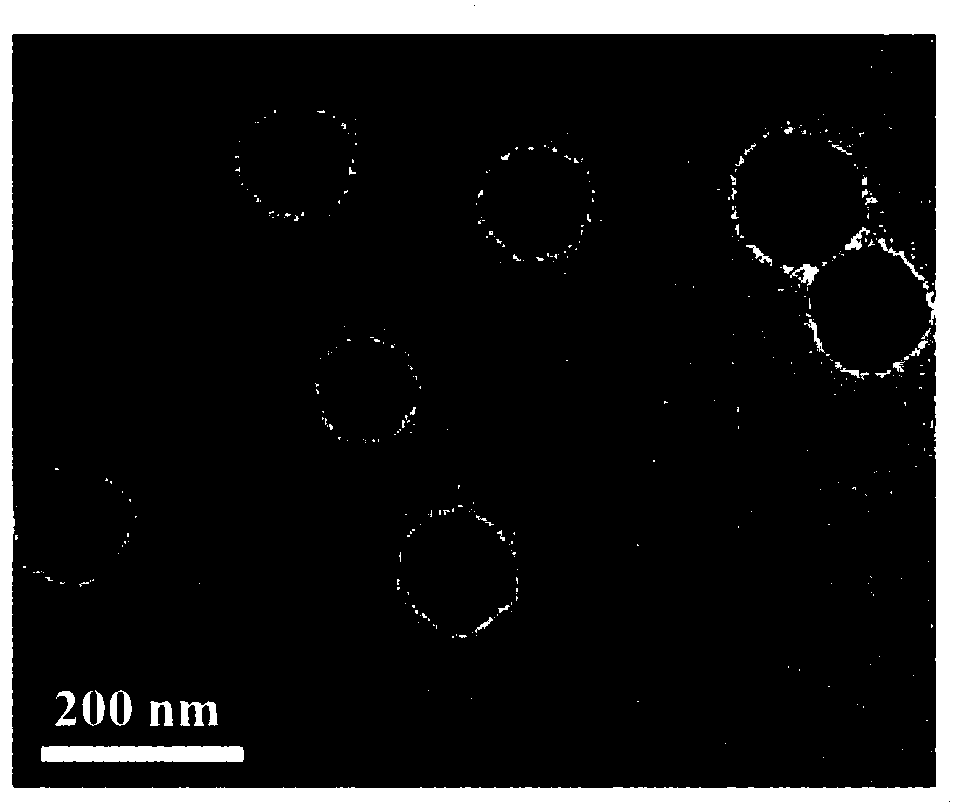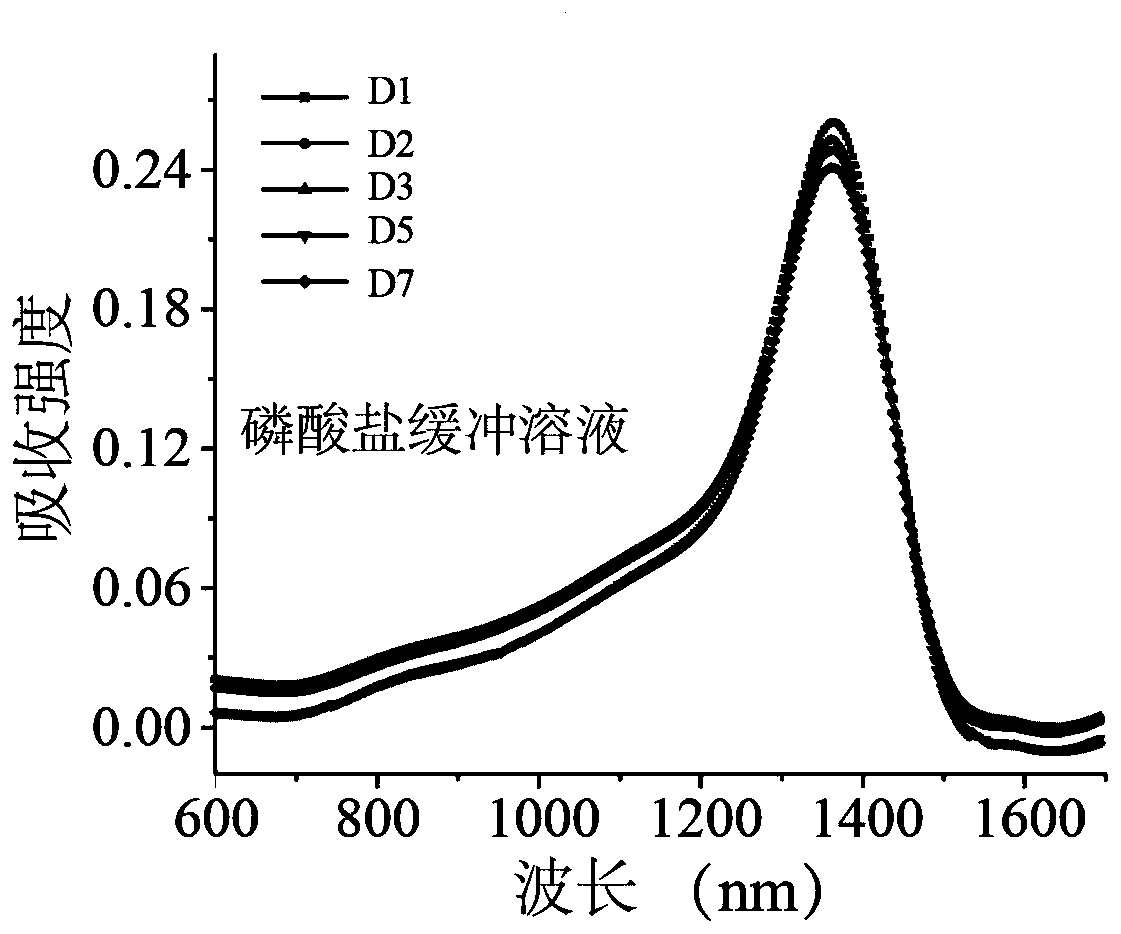Cyanine dye FD-1080 J-aggregate as well as preparation method and application thereof
A technology of FD-1080J-, cyanine dye, which is applied in the directions of preparations and pharmaceutical formulations for in vivo experiments, to achieve the effects of excellent spatial resolution, excellent water solubility and biocompatibility, and deep penetration depth
- Summary
- Abstract
- Description
- Claims
- Application Information
AI Technical Summary
Problems solved by technology
Method used
Image
Examples
Embodiment 1
[0023] Weigh FD-1080 (1.13 mg, 1.5 µmol) and dissolve it in 1 mL of methanol, and dissolve 25 mg of dimyristoylphosphatidylcholine (DMPC) in 1 mL of chloroform. Add 20 µL of FD-1080 stock solution and 407 µL of DMPC stock solution into a 25 mL round-bottomed flask so that the molar ratio of dye to phospholipid is 1:500. After 2 hours, add 2 mL of phosphate buffer solution to a 50°C water bath and sonicate for 10 minutes, then transfer to a probe-type sonication for 15 minutes.
Embodiment 2
[0025] FD-1080 (1.13 mg, 1.5 µmol) was weighed and dissolved in 1 mL methanol, 25 mg dimyristoylphosphatidylcholine (DMPC) was dissolved in 1 mL chloroform, phospholipid polyethylene glycol 2000 (DSPE-PEG 2000 ) 25 mg dissolved in 1 mL chloroform. Add 200 µL FD-1080 stock solution, 155 µL DMPC stock solution, and 30 µL DSPE-PEG to a 25 mL round bottom flask 2000 For the stock solution, the molar ratio of the dye to the phospholipid is 1:20. After spin-drying on a rotary evaporator, pump it in a vacuum oven for 2 hours, add 2 mL of normal saline to a water bath at 50°C and sonicate for 10 minutes before transferring to probe ultrasound for 15 minutes.
Embodiment 3
[0027] Weigh FD-1080 (1.13 mg, 1.5 µmol) and dissolve it in 1 mL of methanol, and dissolve 25 mg of dipalmitoylphosphatidylcholine (DPPC) in 1 mL of chloroform. Add 20 µL of FD-1080 stock solution and 82 µL of DPPC stock solution into a 25 mL round bottom flask so that the molar ratio of dye to phospholipid is 1:100, spin dry on a rotary evaporator, and then pump in a vacuum oven. After 2 hours, add 2 mL of deionized water to a 50°C water bath and sonicate for 5 minutes, then transfer to a probe sonicator for 10 minutes.
PUM
 Login to View More
Login to View More Abstract
Description
Claims
Application Information
 Login to View More
Login to View More - R&D
- Intellectual Property
- Life Sciences
- Materials
- Tech Scout
- Unparalleled Data Quality
- Higher Quality Content
- 60% Fewer Hallucinations
Browse by: Latest US Patents, China's latest patents, Technical Efficacy Thesaurus, Application Domain, Technology Topic, Popular Technical Reports.
© 2025 PatSnap. All rights reserved.Legal|Privacy policy|Modern Slavery Act Transparency Statement|Sitemap|About US| Contact US: help@patsnap.com



